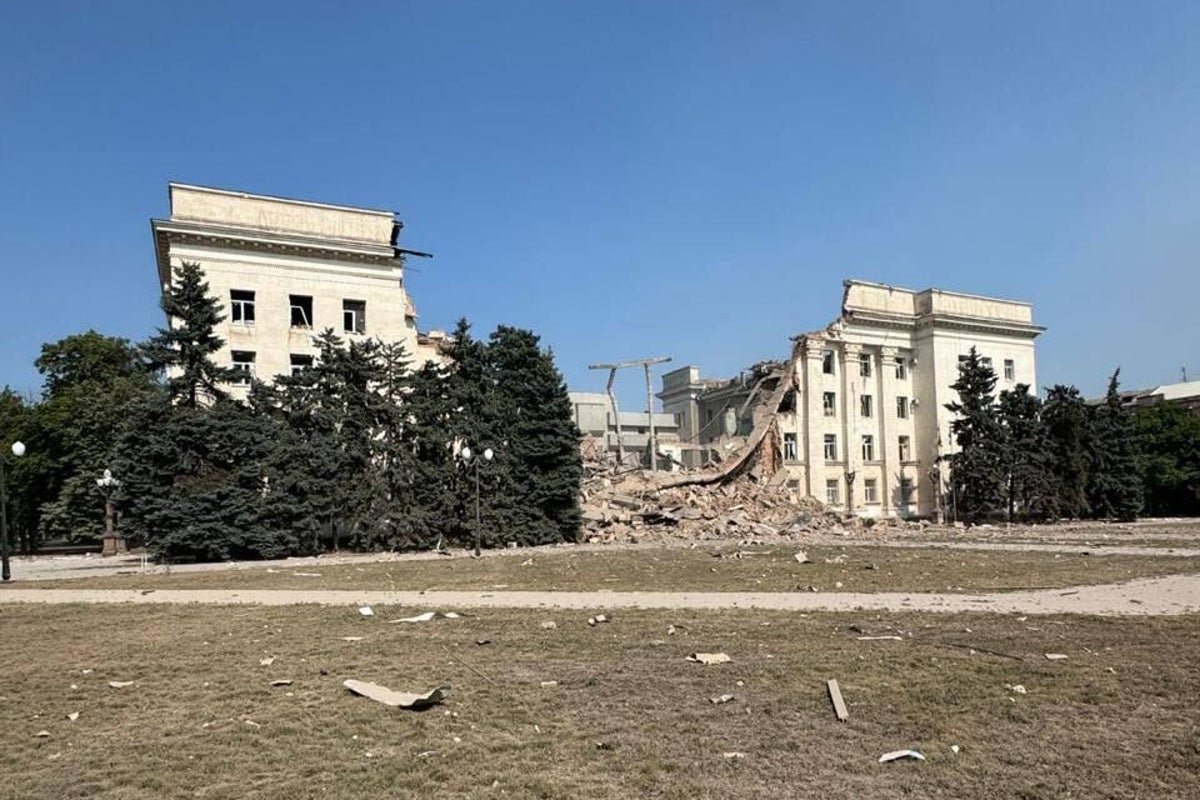Kherson Regional Administration Building Targeted in Airstrike
On Thursday, the city of Kherson in southern Ukraine witnessed a devastating glide bomb strike, marking a significant escalation in the ongoing conflict between Ukraine and Russia. Local authorities reported that multiple rounds of glide bombs were fired at the city, resulting in destruction and injuries.
The Impact of the Attack
The Kherson regional administration building suffered extensive damage, with video footage shared by Oleksandr Prokudin, the region’s governor, showing a large portion of the building missing. Two individuals were reported injured in the attack, which also affected several high-rise buildings in the vicinity. Prokudin emphasized the scale of the assault, referencing “four KABs,” the Ukrainian term for glide bombs, which are retrofitted, Soviet-era munitions capable of carrying upwards of 1,500 kilograms of explosives.
Footage released later in the day indicated that further destruction occurred, as a second round of glide bomb strikes was noted, intensifying concerns over the safety of residents in Kherson.
Broader Context of Escalation
This attack is part of a wider trend of increased military operations in Ukraine, as Russian President Vladimir Putin has ramped up strikes across the nation. The human toll is alarming, with reports emerging from the northern city of Pryluky, where a Russian drone strike killed at least five civilians, including a one-year-old child. Such casualties underscore the brutal reality of civilian life amid the ongoing hostilities.
International Reactions and Political Dynamics
In the backdrop of these developments, U.S. President Donald Trump warned that Putin might retaliate against Ukraine’s recent military operations, known as Operation Spiderweb. The implications of international communications and diplomacy are significant, as the conflict continues to draw global concern and commentary.
The Human Cost of Conflict
Images shared from the aftermath of the Pryluky drone strike highlight the devastating human cost of this conflict. Rescue operations were underway as civilians attempted to clear rubble from destroyed homes, a stark reminder of the everyday impacts of war. The devastation faced by civilians has prompted international calls for aid and support, amplifying concerns over the humanitarian crisis triggered by the prolonged conflict.
With this latest escalation in Kherson, the eyes of the world are again focused on Ukraine. The situation remains fluid, and as international leaders engage in discussions about military support and diplomatic solutions, the urgency of addressing civilian safety and humanitarian needs grows.
The Tactical Shift in Warfare
The use of glide bombs in this context signifies a shift in military tactics. These precision-guided munitions are known for their accuracy and destructive capacity, raising questions about the strategy being employed by Russian forces. As currents of warfare evolve, these developments compel analysts to reassess the effectiveness and humanitarian implications of technological advancements in military capabilities.
Continued Civilian Struggles
Civilians caught in the crossfire face daily uncertainties, exacerbated by ongoing military operations. As high-stakes bombing campaigns and drone strikes become commonplace, families must grapple with loss, displacement, and the destruction of their communities.
The international community watches closely as the humanitarian situation continues to deteriorate, hoping for pathways to diplomacy even amid the chaos.
Visual Documentation and Ground Realities
Alongside the reports and political discussions, the imagery emerging from Kherson and Pryluky serves as powerful testimony to the realities of war. Images of rescue workers battling flames and scavenging through ruins starkly illustrate the urgent need for humanitarian support.
As these events unfold, the necessity for accurate reporting and timely assistance becomes increasingly critical. Through this lens, the resilience of those affected and their story of survival eloquently speaks to the broader implications of conflict in today’s world.


